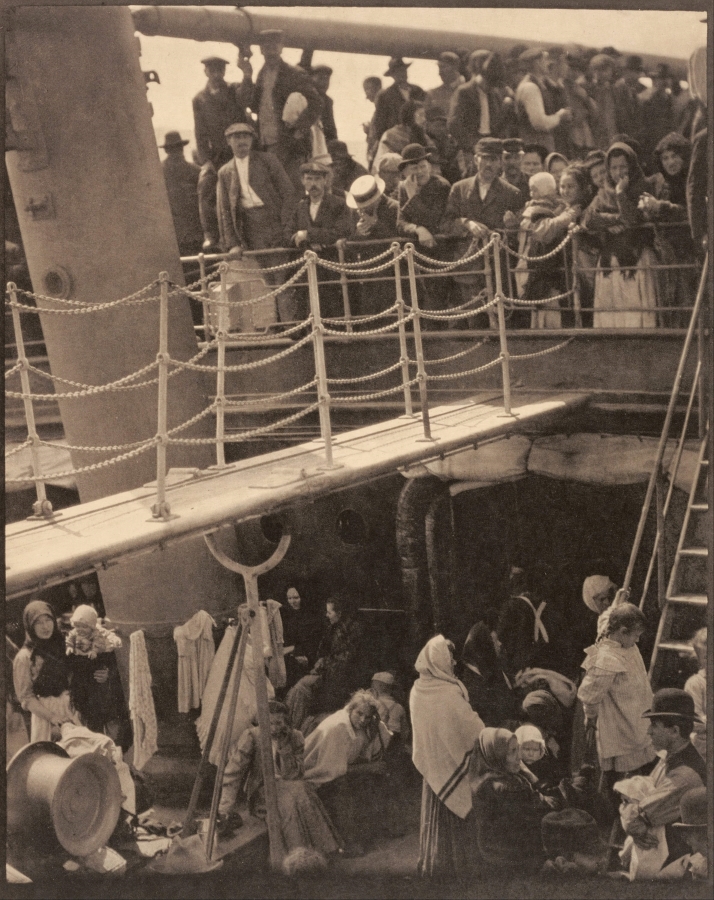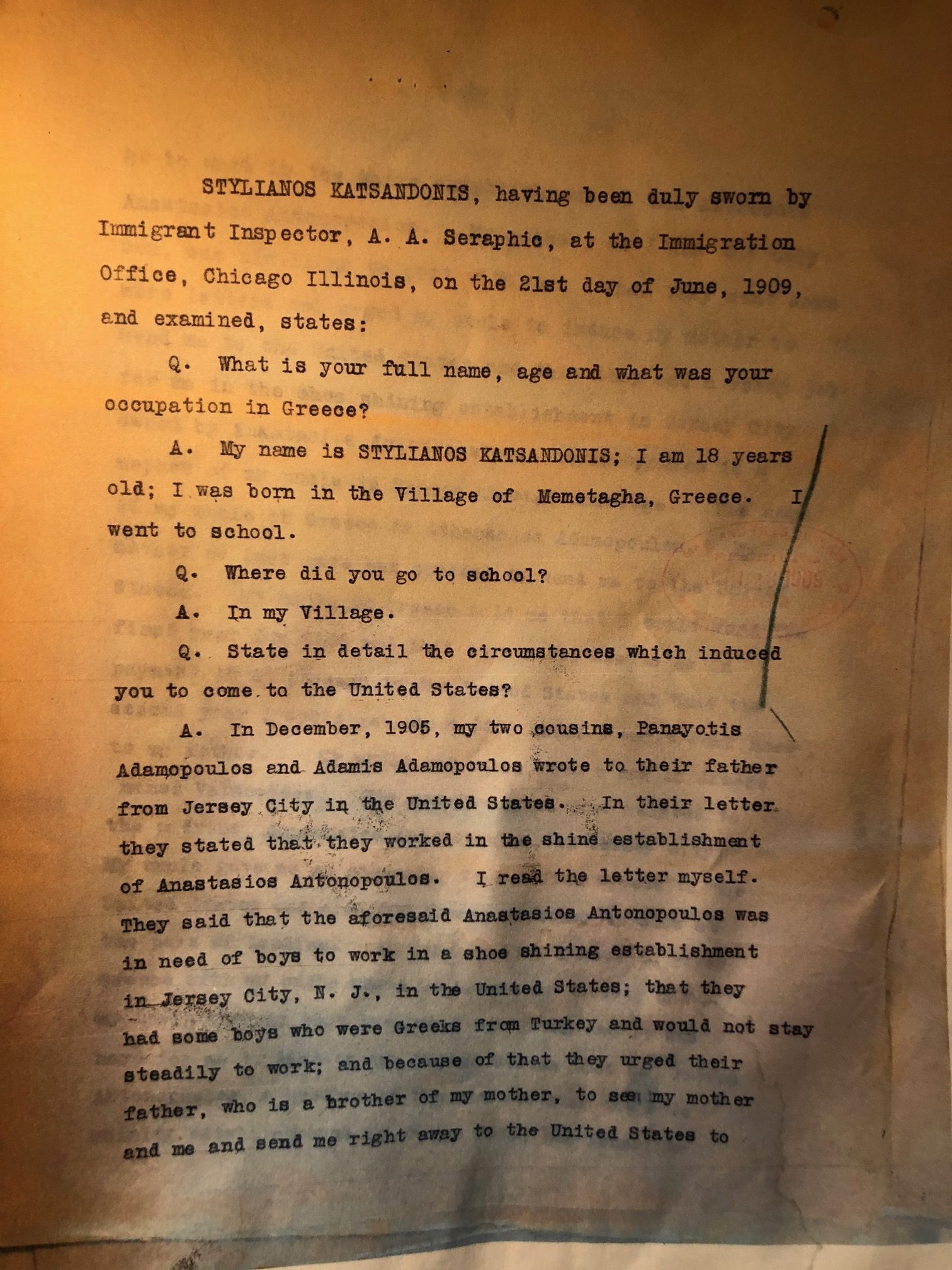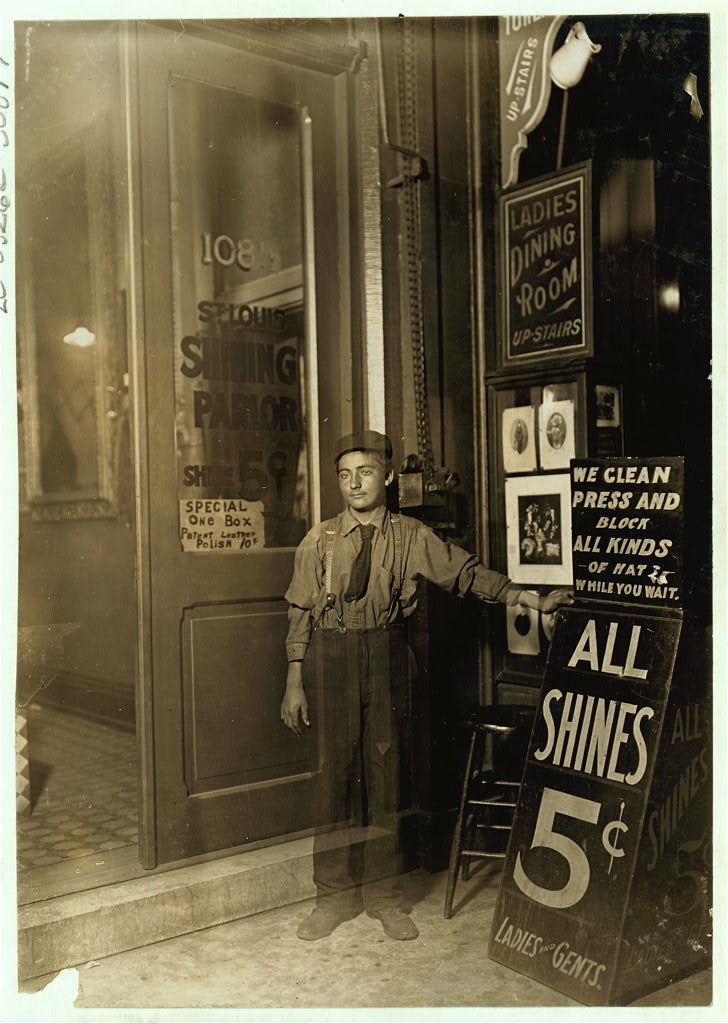By: Joseph Gara
Case File: 52045/40
Immigrant: Stylianos Katsandonis

Stylianos Katsandonis came to the United States from the village of Memetagha, Greece under an assumed identity. He did this to circumvent the Foran Act of 1885, also known as the Alien Contract Labor Law, which made importing contract workers illegal and grounds for those immigrants’ deportation. While posing as a stranger’s brother so he could enter the U.S., Katsandonis arrived in 1906 to work as a shoe shiner for Anastasios Antonopoulos.

Katsandonis would arrive on a crowded vessel with conditions similar to those captured by Alfred Stieglitz. Even though the cost of his steerage passage was the cheapest possible means of travel, Katsandonis still had to work off the debt once he arrived, as it was paid for by his employer. Many boys came from Greece and other countries to work in the shoe-shining business in the New York metropolitan area. He was even put to work the day after he arrived.
According to Katsandonis, after his arrival, “The next morning we met Anastasios Antonopoulos. He welcomed me and said that he was expecting me. He told me to start to work immediately.” Katsandonis’s brother for immigration purposes, Marianos Karas, was given two days to get over sea sickness. Karas even testified when he was being questioned in 1909, “He told us to stay a couple of days and get through the seasickness effects and that he would put the boy to work in his shine establishment.” Katsandonis’s cover story was that he was going to the United States to attend school which was, at the time, a legal reason for a minor to enter, so long as he had a family and a place to live.
The authorities eventually did discover that his employer was hiring contract laborers, which was criminal for the employers and grounds for deportation or debarment for the workers, and an investigation took place. Katsandonis told authorities that “My uncle gave me these instructions and explained that if I did not carry them out I would be deported.”
Katsandonis landed under the name Stylianos Karas to match his “brother”, Marianos Karas. After the authorities figured out that the establishment owned by Anstasios Antonopoulos was filled with contract labor workers and an investigation ensued, the investigators were unable to find Katsandonis, who left for Chicago and escaped the three-year statute of limitations in place concerning contract labor workers.
The authorities did eventually catch up with Katsandonis in Chicago and there was an investigation, but he was not deported because he had evaded capture during the three-year period. During questioning he told the authorities that he had worked for Antonopoulos for two years and seven months, but he was never sure if his employer had followed through with his promise to compensate his mother financially. He would leave the establishment with a mere $50 in his pocket.
Document/Image Analysis

The interview of Stylianos Katsandonis from the Bureau of Immigration inspectors included a transcript of an interrogation that took place in the Chicago Immigration Office on June 21, 1909. This was to determine if he had been a contract worker when he arrived in the United States and if he should be deported. The Foran Act of 1885 forbade contract workers, but many immigrants came into the U.S. with jobs already lined up, which they agreed to work at in order to pay off debts from the cost of passage. The interrogation exemplifies the type of intense questioning immigrants endured when trying to prove their eligibility to enter and stay in the United States in the late nineteenth and early twentieth centuries.
“State in detail the circumstances which induced you to come to the United States,” Katsandonis was told. Investigators also asked questions about his employer and his employer’s banking habits. Those questions were designed to help the interviewers determine if they should levy a $1,000 fine against his employer. Employers who imported contract workers obviously could not be subject to deportation if they were American citizens, but they were subject to costly penalties.
The question about the circumstances that induced Katsandonis to come to the United States, and whether they had been hired abroad, was one that put many immigrants in a bind. If they said “yes”, they might be deported as contract laborers. If they said “no”, they might be considered a potential public charge and also risk being deported. Since Katsandonis was interrogated long after his arrival, he was in a less risky position than a newly arrived immigrant. However, there still was some risk he might be deported. He was still a very young man in a foreign county, and he must have been terrified to answer questions that may have resulted in his being sent back to Greece or being treated like a criminal.

Why It Matters
Stylianos Katsondonis’s experience was an example of what contract labor workers had to endure in order to get into the country, as well as the horrid conditions they had to go through in order to stay here permanently. They had to have a plausible, if not factual, cover story in order to avoid being scrutinized by the authorities during the boarding and entering process, then they were underpaid and in debt once they arrived. Katsondonis’s story is so jarring and angering because his mother was manipulated into sending him to the United States by an uncle. It is unknown if she ever even received the money Antonopoulos said he was sending her. The lifestyle of a contract laborer in the shoe-shine business was abysmal. They were never able to be totally free, since they were indebted to their bosses, working for long hours and living in squalor. Reformers often compared contract laborers to slaves since both were not able to experience the fruits of their labors, live independently, or make personal financial and lifestyle choices.
Employers like Antonopoulos might seem evil, but they were simply part of a structural hierarchy that existed at the time pertaining to contract labor workers. Many workers had their lives ruined during this process — they were taken away from their families and sent to a foreign land, which contrasted with other immigrants who came in family units or came for family reunification.
The plight of the exploited contract workers is also significant because it is in many ways similar to that of victims of modern day human trafficking. Those who are trafficked are also taken away from their families and homes, and such victims endure horrid conditions and unfair fiscal arrangements. Whether or not Katsandonis was trafficked is complicated, primarily because he entered the arrangement due to laws against contract labor. If those had not been in place, he could have potentially found a less dangerous and unjust path to finance his journey.
Questions for future consideration
1) How many families in the United States today had their origins from a contract worker who immigrated from another country?
2) Were contract workers like Katsandonis, who later become quite successful in Chicago, in some ways being done a “favor”?
3) Is there some level of acceptance in the American psyche for an underclass of workers?